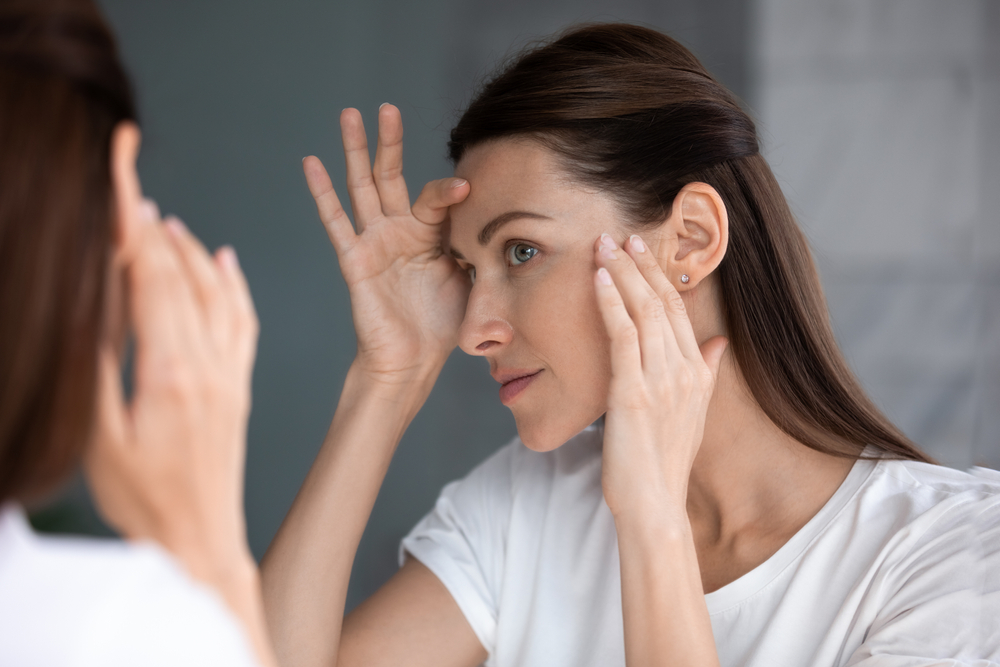Glycolic acid isn’t exactly new – included in a variety of skincare products and chemical peels – but not everyone is aware of its efficacy as part of a routine.
This remarkable chemical is an all-in-one cure for all of your skin’s problems, from aging to acne.
It takes care of everything. It’s an ingredient you should certainly consider incorporating into your skincare routine.
Discover the inner workings of glycolic acid for the skin and how you may use it to solve some of your most pressing problems.
Let’s start!
Table of Contents
What is Glycolic Acid?
Glycolic acid is an alpha hydroxy acid (AHA) used to treat anti-aging, hyperpigmentation, dryness, and acne. Of all the AHAs, it has the shortest molecular structure allowing it to penetrate deeper into the skin.
Certain plants, such as beets, sugarcane, and some fruits, contain it naturally. It is also a common ingredient in skin care products due to its amazing characteristics.
Properties of Glycolic Acid
Glycolic acid for skin has the below-mentioned properties:
Exfoliator: It dissolves the outermost layer of skin cells and oil to remove them as a chemical exfoliant.
Humectant: It is a humectant, which means it draws and binds water to the skin’s cells. This is accomplished by increasing the synthesis of glycosaminoglycans, which are water-attracting molecules in the skin.
Anti-aging: Glycolic acid can help to slow down some of the processes that cause skin aging. It can, for example, prevent UV damage and boost collagen and hyaluronic acid levels in the skin. Both hyaluronic acid and collagen play a role in providing skin elasticity.
Benefits of Glycolic Acid for Our Skin
What does glycolic acid do to your skin? Glycolic acid products can be an excellent supplement to any skincare regimen.
Here are a few of glycolic acid’s advantages.

Reduces Fine Lines and Wrinkles
By exfoliating the top layer of skin, glycolic acid minimizes the appearance of fine lines and wrinkles.
How?
- It raises hyaluronic acid levels in the skin, which helps to keep the skin hydrated
- It stimulates collagen formation, the major structural protein in the skin
- It enhances fibroblast and keratinocyte proliferation rates, which serve to maintain the skin’s healthy
- It helps in skin healing and regeneration, which promotes skin suppleness
Brightens and Smooths Complexion
Glycolic acid is the holy grail of exfoliation because its tiny molecules penetrate deep beyond the surface of your skin and break down ties between dead skin cells. Glycolic acid exfoliates your skin, making it brighter, smoother, and softer.
Fights Acne
Moving next to benefits, it treats acne. How?
Glycolic acid is keratolytic, which means it can break up dead skin cells on the surface of the skin and open any clogged pores. In this way, it prevents comedones, blackheads, and inflammatory breakouts.
Hydrates Dry Skin
Glycolic acid moisturizes as well as exfoliates dry skin. As mentioned above, it is classified as a humectant because it chemically attracts water molecules to itself. This means glycolic acid can replenish the skin’s moisture levels.
Fades Hyperpigmentation
Hyperpigmentation is darkest on the surface of your skin, with less pigmented skin beneath. Dr. Farhana Nazir who is one of the top dermatologists in Pakistan says that glycolic acid exfoliates and eliminates dead skin cells from the surface of the skin, revealing a new layer of skin with a more even tone. This is an efficient hyperpigmentation treatment when used on a regular basis.
How to Choose A Glycolic Acid Product?
The choice of glycolic acid product depends on the type of results a person wants to obtain.
It is available in a variety of forms, including:
- Chemical peels
- Cleansers
- Creams
- Gels
- Masks
- Toner
- Serums
Now, you must be wondering which product form to choose! Well, it is critical to get advice from a dermatologist, before using glycolic acid. Your doctor can tell you which product is right for you. To have a consultation, you can make an appointment via Healthwire.pk.
Precautions on How to Use Glycolic Acid
When you’re ready to give glycolic acid a try, perform the following:
Do a patch test: Try out the product on a small patch of skin (that isn’t your face). It will be possible to see if the skin will tolerate it this way.
Begin slowly: It’s recommended to start with a low-concentration glycolic acid and use it sparingly at first. If the skin feels smoother and there are no signs of an allergic reaction, a person can gradually increase their use.
Pick one product: There’s no need to utilize a complete range of glycolic acid-based skin care. The benefits can be obtained with just one product.
Use only at night! Glycolic acid products should only be used at night. Because it makes your skin more vulnerable to UV radiation, this is critical.
Less is more: For your entire face, use a pea-sized amount or less. Excessive irritation might be caused by using too much product.
Don’t exfoliate too much: Exfoliate once or twice weekly, NOT ONCE OR TWICE DAILY! Exfoliating too much can cause irritation, dryness, and even premature aging.
Don’t scrub: It is a chemical exfoliator. Therefore, don’t scrub! Allow the product to absorb and work its magic.
Follow Up With….
Moisturizer: After using your glycolic acid product, experts at Avicenna Hospital suggest using a moisturizer. Keeping your skin hydrated will help to avoid any potential irritation or redness from your product.
Sunscreen: It is a must-have! It makes your skin more sensitive to UV radiation and thus more vulnerable to sun damage. As a result, use sunscreen every day. ALWAYS. Period.
Also, get to know in detail about mandelic acid – another AHA for acne-prone skin.
Some Other Things to Consider!!!
Consistency is vital: It will take time for the results to appear. It may take 4-6 weeks of continuous glycolic acid exfoliation or chemical peels to notice results. Wait patiently.
Tingling is common: When using glycolic acid topically, tingling or a mild burning sensation in the skin is typical, and it normally goes away after a few minutes.
Some Safety Tips: Do’s and Don’ts of Glycolic Acid
Do’s
Exfoliation with glycolic acid exposes a new layer of skin that is easily irritated. Therefore,
- Put on some sunblock!
- Use with caution on waxing areas.
- Avoid applying on your eye area.
- Consult a dermatologist to find out how much glycolic acid you should use.
Don’ts
Beware of the following actions:
- Do not apply to irritated acne.
- Do not apply to sunburned skin.
- Use with caution when using strong scrubs or physical exfoliants.
- Don’t use it in combination with retinoids.
Are There Any Side Effects?
Glycolic acid is not recommended for everyone. Some of the common side effects that can occur include:
- Swelling
- Stinging
- Burning
The Bottom Line!
Glycolic acid for skin is a multipurpose skincare component that can help battle acne while also improving the appearance of your skin. Because of the risk of irritation, it’s advised to consult a dermatologist before using it. Starting with lower percentage formulations can help your skin adjust and reduce irritation risks.
